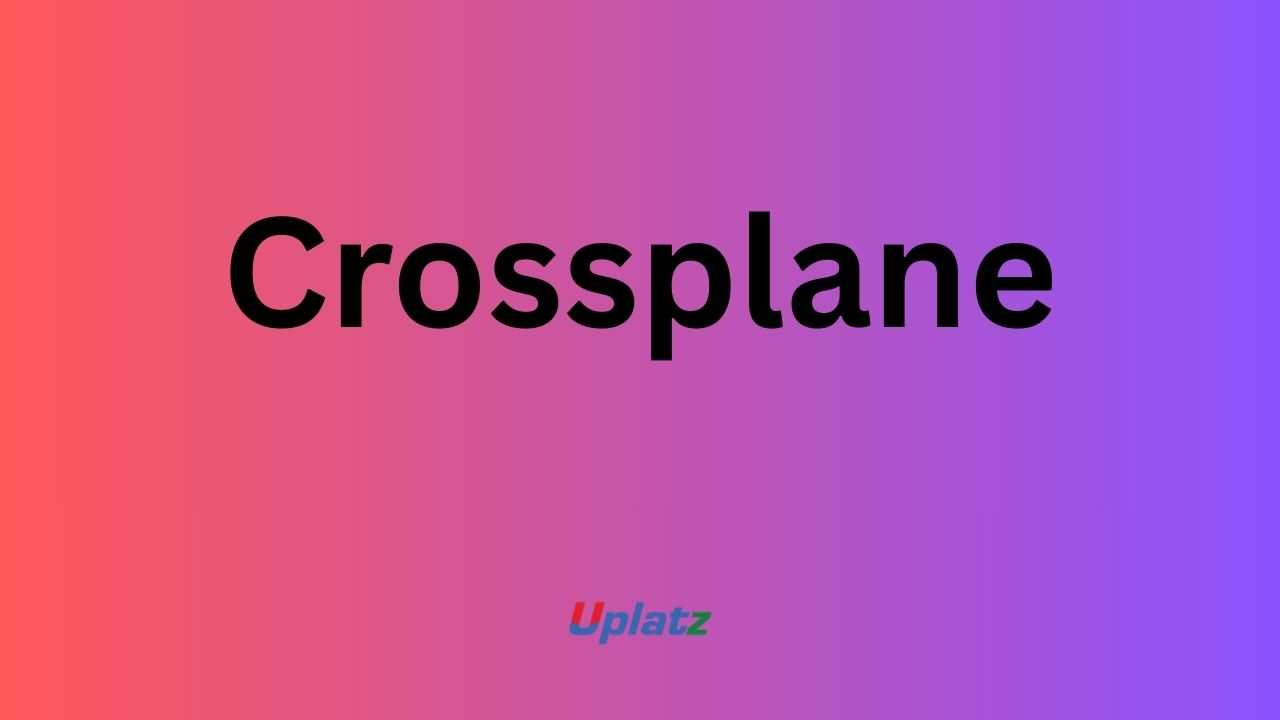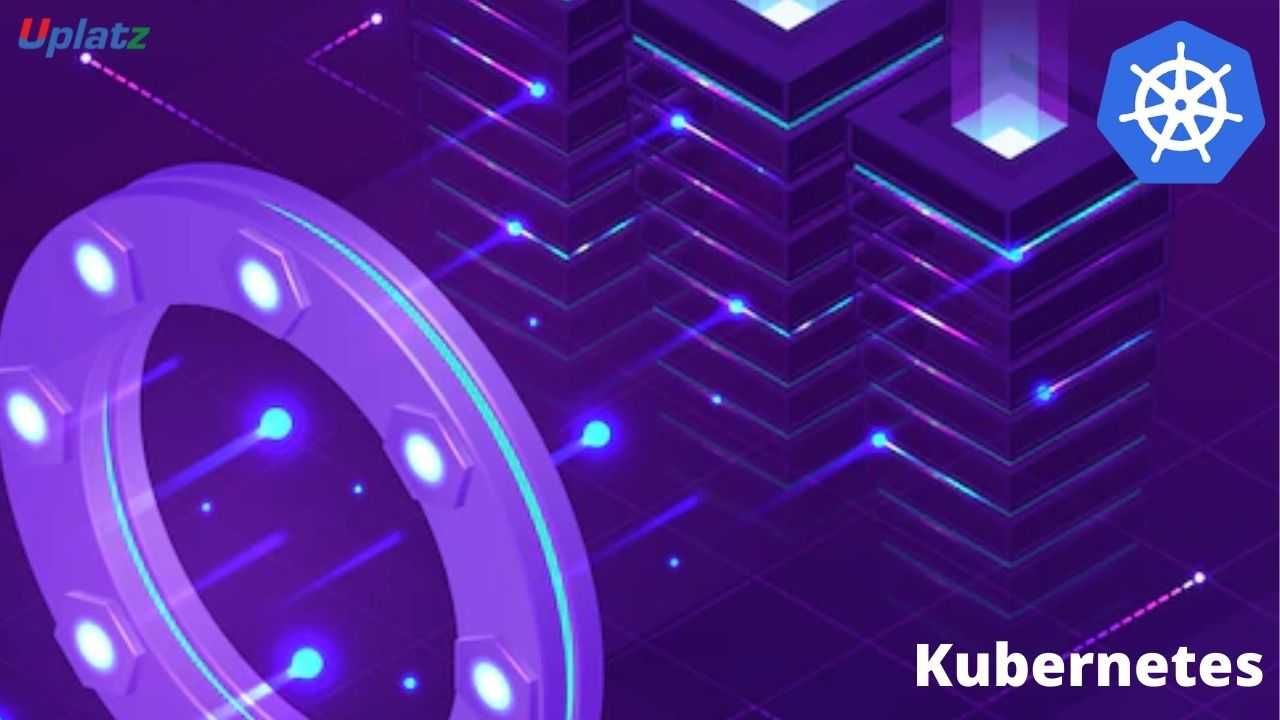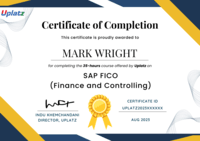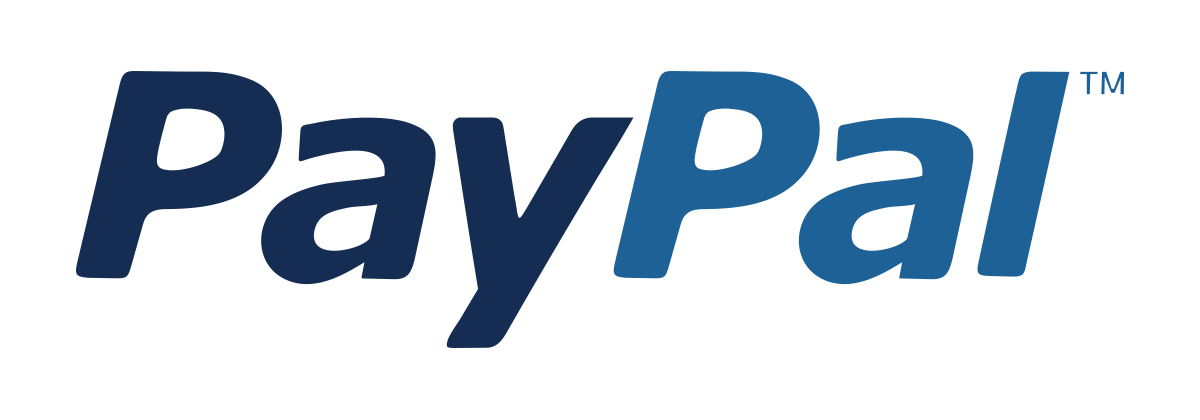Crossplane
Master Crossplane to manage cloud infrastructure and services natively in Kubernetes using Infrastructure as Code. Price Match Guarantee
Full Lifetime Access
Access on any Device
Technical Support
Secure Checkout
Course Completion Certificate
Price Match Guarantee
Full Lifetime Access
Access on any Device
Technical Support
Secure Checkout
Course Completion Certificate
 96% Started a new career
BUY THIS COURSE (
96% Started a new career
BUY THIS COURSE (GBP 12 GBP 29 )-
 87% Got a pay increase and promotion
87% Got a pay increase and promotion
Students also bought -
-

- Terraform: Automating Cloud Infrastructure
- 25 Hours
- GBP 12
- 1965 Learners
-

- Pulumi
- 10 Hours
- GBP 12
- 10 Learners
-

- Kubernetes
- 20 Hours
- GBP 12
- 355 Learners

Modern DevOps and cloud engineering teams are increasingly embracing Kubernetes not only for container orchestration but also for managing full-scale cloud infrastructure. However, provisioning and maintaining multi-cloud resources across AWS, Azure, and Google Cloud can still be complex and inconsistent. Crossplane, an open-source Kubernetes add-on, changes that paradigm by transforming Kubernetes into a universal control plane for both applications and infrastructure.
This Mastering Crossplane – Self-Paced Online Course by Uplatz teaches you how to provision, manage, and automate cloud infrastructure directly through Kubernetes manifests. By unifying cloud resource management within the Kubernetes ecosystem, Crossplane enables GitOps-based workflows, self-service provisioning, and multi-cloud consistency — key pillars of modern cloud-native operations.
Whether you’re a DevOps engineer, cloud architect, or site reliability engineer (SRE), this course equips you with hands-on skills to design, deploy, and manage infrastructure as code entirely within Kubernetes.
🔍 What is Crossplane?
Crossplane is an open-source Kubernetes add-on that allows you to provision and manage infrastructure resources — such as VMs, databases, networks, message queues, and storage — using familiar Kubernetes APIs and manifests.
It extends Kubernetes’ control plane beyond containerized workloads to include cloud-native infrastructure, turning your Kubernetes cluster into a unified orchestration hub for both infrastructure and applications.
Crossplane introduces:
-
Providers for major cloud platforms (AWS, Azure, GCP, Alibaba Cloud, etc.)
-
Custom Resource Definitions (CRDs) for infrastructure objects (e.g., RDSInstance, S3Bucket)
-
Compositions and Composite Resources (XRs) to define reusable infrastructure blueprints
-
Declarative management using YAML, compatible with existing GitOps workflows
By integrating with tools like ArgoCD, Flux, and Terraform, Crossplane gives you a single declarative interface to manage your entire stack — from code to cloud infrastructure.
⚙️ How Crossplane Works
Crossplane leverages Kubernetes’ API-driven model to orchestrate cloud infrastructure declaratively. Here’s how it functions:
-
Installation & Setup: Crossplane is installed as a set of controllers and CRDs within your Kubernetes cluster.
-
Providers Configuration: You configure provider credentials (AWS, Azure, GCP, etc.) as Kubernetes secrets.
-
Resource Provisioning: Crossplane creates cloud resources (e.g., EC2, S3, RDS) via Kubernetes manifests, just like deploying pods or services.
-
Compositions (XRDs & XRs): Developers define reusable infrastructure templates (e.g., a “production database” or “web service stack”) that teams can claim as custom resources.
-
GitOps Integration: Crossplane integrates with GitOps pipelines — any change pushed to Git automatically triggers infrastructure updates.
-
RBAC & Policy Management: Kubernetes’ built-in security and RBAC ensure safe, auditable, and team-based infrastructure access.
This design enables a cloud-agnostic, modular, and self-service infrastructure model that simplifies DevOps workflows and eliminates vendor lock-in.
🏭 How Crossplane is Used in the Industry
Crossplane is rapidly being adopted by enterprises and startups looking to standardize their multi-cloud operations and infrastructure-as-code practices.
Key use cases include:
-
Multi-Cloud Management: Manage AWS, Azure, and GCP resources using a single Kubernetes interface.
-
GitOps Infrastructure: Automate provisioning and lifecycle management via Git workflows using ArgoCD or Flux.
-
Self-Service Infrastructure Portals: Empower developers to provision resources without cloud console access.
-
Hybrid Cloud Environments: Extend on-prem Kubernetes clusters to manage cloud resources securely.
-
Cross-Environment Consistency: Ensure identical resource definitions across staging, testing, and production clusters.
Industry leaders use Crossplane to unify infrastructure operations, enforce compliance policies, and accelerate DevOps automation in cloud-native ecosystems.
🌟 Benefits of Learning Crossplane
Learning Crossplane gives you a strategic edge in today’s cloud-native DevOps landscape.
Top benefits include:
-
Unified Infrastructure Management: Operate applications and infrastructure through the same Kubernetes APIs.
-
True Multi-Cloud Flexibility: Seamlessly provision resources across AWS, Azure, and GCP.
-
GitOps Compatibility: Integrate infrastructure provisioning with version control, CI/CD, and automated rollbacks.
-
Infrastructure Abstraction: Use composite resources (XRs) to define reusable, parameterized infrastructure templates.
-
Security and Governance: Apply RBAC and policy management to control resource access.
-
Career Growth: Crossplane expertise is increasingly sought after in cloud engineering, DevOps, and SRE roles.
-
Open-Source Advantage: Join a rapidly growing CNCF community shaping the future of cloud orchestration.
By mastering Crossplane, you’ll be ready to manage infrastructure like code — with precision, scalability, and automation built into every deployment.
📘 What You’ll Learn in This Course
This course provides an end-to-end understanding of Crossplane through practical labs and real-world projects. You will learn to:
-
Understand Crossplane architecture and its integration with Kubernetes.
-
Install and configure Crossplane in local or managed clusters (Minikube, EKS, GKE, AKS).
-
Configure cloud providers such as AWS, Azure, and GCP.
-
Provision cloud resources (EC2, RDS, S3, etc.) via Kubernetes manifests.
-
Design composite resources (XRs) and build infrastructure abstractions.
-
Integrate Crossplane with GitOps tools like ArgoCD and Flux.
-
Deploy multi-cloud workloads using provider configurations.
-
Apply RBAC, policies, and best practices for secure infrastructure management.
-
Monitor, scale, and manage lifecycle operations for Crossplane resources.
Each module combines theoretical concepts with hands-on demonstrations, ensuring you gain practical, job-ready skills.
🧠 How to Use This Course Effectively
To get the most from this course:
-
Review Kubernetes Fundamentals: Brush up on basic Kubernetes concepts (Pods, CRDs, RBAC).
-
Set Up Your Lab: Use Minikube or a managed service (EKS, GKE, AKS) for Crossplane experiments.
-
Start with Providers: Configure your first AWS or GCP provider and create test resources.
-
Practice Composition: Create and reuse custom abstractions for multi-tier infrastructure.
-
Integrate GitOps: Use ArgoCD or Flux to manage infrastructure changes through Git commits.
-
Experiment Safely: Use sandbox accounts and teardown commands to avoid unnecessary charges.
-
Complete Capstone Project: Deploy a real-world workload (e.g., multi-tier web app) using Crossplane-managed infrastructure.
Repetition and experimentation will help you master Crossplane’s declarative and modular design philosophy.
👩💻 Who Should Take This Course
This course is ideal for:
-
DevOps Engineers managing Kubernetes and cloud infrastructure.
-
Cloud Engineers & Architects designing multi-cloud systems.
-
Site Reliability Engineers (SREs) implementing GitOps workflows.
-
Developers building self-service provisioning platforms.
-
Students & Professionals pursuing cloud-native certifications or roles in DevOps.
Whether you’re automating deployments or managing production clusters, this course provides the practical skills and conceptual clarity needed to integrate infrastructure into the Kubernetes ecosystem.
🧩 Course Format and Certification
The course is self-paced, offering flexibility to learn at your convenience. It includes:
-
HD video tutorials and demonstrations
-
Downloadable YAML manifests and configuration examples
-
Hands-on assignments and exercises
-
Real-world case studies and best practices
-
Knowledge quizzes and checkpoints
Upon successful completion, you’ll receive a Course Completion Certificate from Uplatz, validating your Crossplane proficiency and readiness to manage multi-cloud infrastructure the Kubernetes-native way.
🚀 Why This Course Stands Out
-
Comprehensive Coverage: Covers setup, architecture, providers, XRs, and GitOps workflows.
-
Hands-On Focus: Learn by deploying real infrastructure components across multiple clouds.
-
Industry Alignment: Reflects real DevOps use cases and enterprise automation trends.
-
Scalable Skills: Prepare for infrastructure roles in Kubernetes-driven environments.
-
Continuous Updates: Stay current with Crossplane releases and CNCF ecosystem evolution.
By the end of this course, you’ll have the knowledge and confidence to use Crossplane as your single control plane for cloud infrastructure, unlocking a new level of automation and consistency in DevOps operations.
🌐 Final Takeaway
In the age of multi-cloud and Kubernetes-first strategies, managing infrastructure consistently across environments is one of the biggest challenges in DevOps. Crossplane bridges that gap — empowering teams to define, deploy, and operate infrastructure with the same declarative precision they use for applications.
The Mastering Crossplane – Self-Paced Online Course by Uplatz equips you with everything you need to unify cloud resource management, implement GitOps workflows, and simplify infrastructure operations at scale.
Start your learning journey today and master Crossplane — the tool that turns Kubernetes into a powerful, multi-cloud control plane.
By completing this course, you will:
-
Deploy and configure Crossplane and cloud providers.
-
Provision infrastructure using Kubernetes manifests.
-
Build infrastructure abstractions with CompositeResourceDefinitions (XRDs).
-
Enable self-service infrastructure for developers.
-
Integrate Crossplane with CI/CD and GitOps pipelines.
-
Manage multi-cloud deployments through a single control plane.
Course Syllabus
Module 1: Introduction to Crossplane
-
What is Crossplane?
-
Crossplane vs Terraform vs Pulumi
-
Use cases in cloud-native infrastructure
Module 2: Installing Crossplane
-
Cluster setup (Minikube, EKS, GKE, AKS)
-
Installing via Helm or kubectl
-
Verifying installation
Module 3: Crossplane Architecture
-
Custom Resource Definitions (CRDs)
-
Providers and managed resources
-
Control plane overview
Module 4: Working with Providers
-
Configuring AWS, Azure, and GCP providers
-
Creating credentials and secrets
-
Deploying cloud resources via CRDs
Module 5: Composite Resources (XRs)
-
XRDs and Compositions
-
Abstracting infrastructure (e.g., “Managed Database”)
-
Reusable patterns for teams
Module 6: Application & Infrastructure Integration
-
Deploying apps that consume Crossplane resources
-
Self-service provisioning for developers
-
Examples with databases and networks
Module 7: GitOps with Crossplane
-
ArgoCD and Flux integration
-
Declarative infra with GitOps pipelines
-
Continuous delivery of infra + apps
Module 8: Multi-Cloud & Hybrid Cloud
-
Managing multiple cloud providers
-
Crossplane for hybrid cloud setups
-
Federation across environments
Module 9: Security & Governance
-
RBAC for infrastructure access
-
Policy enforcement with OPA/Gatekeeper
-
Best practices for security
Module 10: Real-World Projects
-
Provisioning AWS RDS + S3 with Crossplane
-
Multi-cloud web app deployment
-
Developer self-service platform with Crossplane
Learners will receive a Certificate of Completion from Uplatz, validating expertise in Crossplane and Kubernetes-native infrastructure management. This certification demonstrates skills for roles in DevOps, SRE, Cloud Engineering, and Platform Engineering.
Crossplane expertise prepares learners for roles such as:
-
DevOps Engineer (Kubernetes + Infra as Code)
-
Site Reliability Engineer (SRE)
-
Platform Engineer (Internal Developer Platforms)
-
Cloud Infrastructure Engineer
-
Multi-Cloud Architect
Crossplane adoption is growing among enterprises adopting GitOps, platform engineering, and multi-cloud strategies, making it a career-boosting skill.
-
What is Crossplane and how does it differ from Terraform?
Crossplane is Kubernetes-native, managing infrastructure via CRDs. Terraform is external and CLI-based. -
What are providers in Crossplane?
Providers are cloud integrations (AWS, Azure, GCP, etc.) that let Crossplane manage external resources. -
What are Composite Resources (XRs)?
Composite Resources allow you to create higher-level abstractions of infrastructure, enabling self-service provisioning. -
How does Crossplane extend Kubernetes?
By adding CRDs that represent cloud resources (e.g., RDS, S3, VPC) inside Kubernetes. -
What is the difference between XRDs and Compositions?
-
XRD (CompositeResourceDefinition): Defines the schema of a new resource type.
-
Composition: Maps the XR to actual cloud resources.
-
How does Crossplane integrate with GitOps?
Crossplane resources are YAML manifests, making them declarative and GitOps-compatible. -
What is the benefit of Crossplane over Helm charts for infrastructure?
Crossplane provisions actual cloud resources (databases, VPCs) vs Helm, which only deploys Kubernetes workloads. -
How does Crossplane ensure security?
By using Kubernetes RBAC, secret management, and policy enforcement to control infra access. -
Can Crossplane manage multi-cloud environments?
Yes, Crossplane supports multiple providers simultaneously, enabling multi-cloud deployments. -
Where is Crossplane commonly used?
In platform engineering, internal developer platforms, GitOps pipelines, and multi-cloud infrastructure management.









